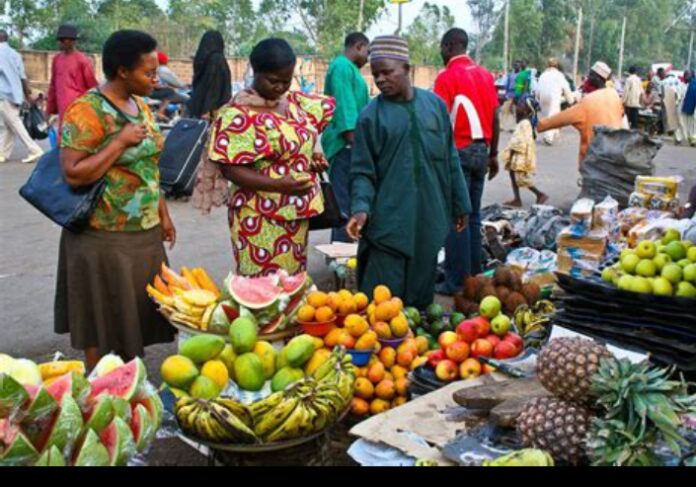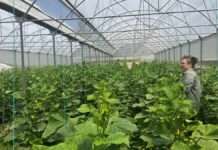The Big Question: Is This a Turning Point or Just a Short-Lived Break?
In a rare and unexpected shift, food prices across Nigeria have been falling in recent weeks. Reports from multiple national and international media outlets confirm that staple items such as grains, yam, beans, and tomatoes have become significantly cheaper. Given Nigeria’s persistent struggle with food inflation—previously hovering around 40%—this development is both surprising and crucial.
But what’s causing this decline? And more importantly, can it last?
Why This Price Drop Is a Big Deal
The fall in food prices is particularly noteworthy for three key reasons:
- It’s Not Just Seasonality – While harvest seasons often lead to price reductions, this trend extends beyond mere supply gluts.
- Ramadan Prices Usually Go Up, Not Down – Historically, the fasting period drives up food demand, yet prices are falling.
- Food Inflation Is a National Crisis – With food consuming 60% of household expenses, price relief is essential for economic stability.
Given these factors, the decline offers much-needed breathing space for Nigerians. However, celebrating too soon without understanding the root causes and sustainability of this trend would be premature.
Breaking Down the Numbers
Several media outlets, including BusinessDay, Nairametrics, Aljazeera, and The Guardian, have reported notable price drops:
- Grains Down by 40% – Aljazeera
- Tomatoes Down by 70% – BusinessDay
- Rice, Yam, Garri Down by 23-50% – BusinessDay
- Onions, Millet, Sorghum Drop by 40-71% – The Guardian
- Pepper Down by 29% – Nairametrics
At the same time, certain items—such as eggs, processed foods, and beverages—haven’t followed suit, likely due to supply chain delays.
Interestingly, this trend defies global patterns. According to the FAO Food Price Index, global food prices rose by 1.6% in February 2025 and are up 8.2% year-on-year. Nigeria, for now, seems to be an outlier.
What’s Driving This Unusual Price Drop?
The Tinubu administration attributes the decline to its policies, including:
- Improved security in farming regions, enabling more production.
- Lifting restrictions on food imports, increasing supply.
- A stronger naira, making imports cheaper.
- Reduced bulk purchases by UN and US aid agencies, lowering demand.
While these explanations seem plausible, hard data is needed to confirm their impact. For example:
- How many more hectares of land have been cultivated?
- How much have government interventions increased food supply?
- Which policies have had the most measurable impact?
Without proper tracking, policymakers risk making decisions based on assumptions rather than evidence.
Another possible factor is market psychology. As prices began falling, farmers and traders who stockpiled grains in anticipation of further hikes may have rushed to offload their inventory, fearing further declines. This, in turn, could have accelerated the price drop.
A Win or Just a Pause? The Bigger Picture
While current food price relief is welcome, Nigeria’s food security crisis remains severe:
- 110th out of 127 countries – 2024 Global Hunger Index
- 107th out of 113 countries – 2022 Global Food Security Index
- 33 million Nigerians at risk of food insecurity in 2025 – UN, FAO, WFP
Despite agriculture contributing 25% of Nigeria’s GDP and employing over 30% of the workforce, the sector struggles with:
- Low productivity – Only 1.19% growth in 2024
- Poor yields – Nigerian farmers produce less per hectare than regional counterparts
- Lack of infrastructure – Inadequate irrigation, roads, and storage facilities
- Security threats – Banditry and conflicts disrupting farming
Even farmers suffer from high food prices because they cannot produce everything they consume. If Nigeria doesn’t fix these systemic problems, this price relief may only be temporary.
What Needs to Happen Next?
To sustain and deepen this positive trend, Nigeria must:
- Invest in Agricultural Productivity – Provide farmers with better seeds, irrigation, and mechanization.
- Improve Rural Infrastructure – Build better roads, storage, and processing facilities.
- Balance Imports and Local Production – Protect farmers without inflating food costs for consumers.
- Use Data-Driven Policies – Ensure decisions are based on actual metrics, not assumptions.
- Prioritize Food Security as National Security – A hungry population is a volatile one.
Final Thoughts: Is This Nigeria’s Turning Point?
The current price drop is encouraging, but Nigeria must not mistake temporary relief for lasting progress. Without structural reforms, food prices could spike again, plunging millions into deeper economic hardship.
This is a defining moment—either the country builds on this trend to ensure long-term food security, or it risks another cycle of inflation and instability.
What do you think? Will food prices continue to fall, or is this just a short-lived break? Share your thoughts in the comments below.
At Headlineswave.ng, we remain committed to uncovering the truth behind the headlines. Stay with us for more insights into Nigeria’s economy, politics, and national issues.










